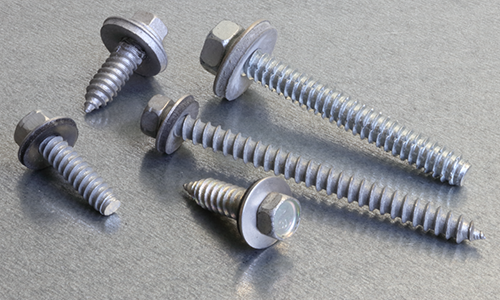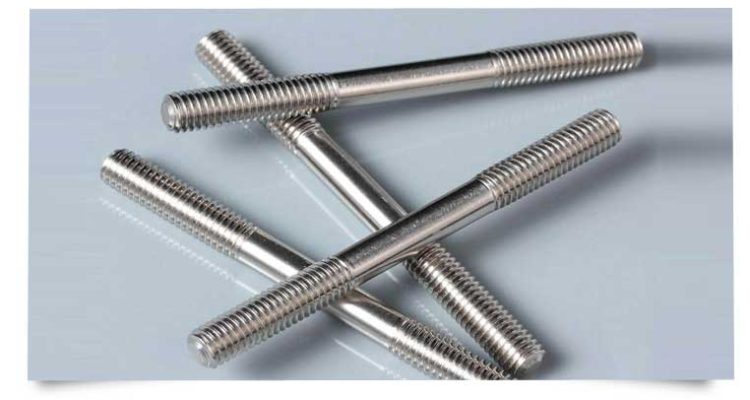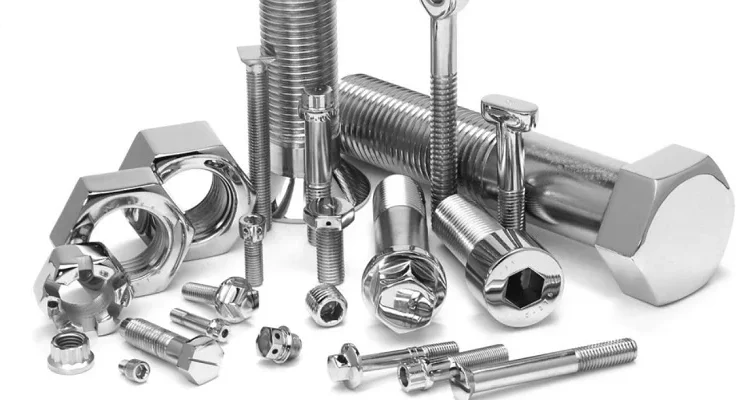
How To Properly Install 304 Stainless Steel Bolts
Prepare tools, follow the step-by-step installation guide, avoid common mistakes, conduct a post-installation inspection, and adhere to maintenance tips for 304 stainless steel bolts.
Installation Preparation
Collecting the Required Tools and Materials
- Corral the Essentials: Gather a torque wrench to get the torque right, a clean rag to prep surfaces and a micrometer or vernier caliper for taking bolt dimensions. Valuable crucial measurements-especially in precision-required installations- with critical applications should be within +/- 0.01 of an inch.
- Using Proper Cleaning Supplies: You will need a steel wire brush or stainless steel specific cleaner as part of the Dreamgrip productions for cleaning your bolting surfaces.
Examine and Clean the Bolting Surfaces
- Surfae Cleaning: Clear the dust, dirt and rust from surfaces with a steel wire brush or cleanerc. These unsanitized surfaces are the basic requirement for safe bolt maintenance.
- Flat Planes: Ensure all surfaces are flat and smooth to prevent any point loadings. ASME standards specify a flatness tolerance of 0.005 inches, thus any plane that is not within.005 inches may cause bolts to fail when they are stressed.
Check Bolt/Thread Rotation Compatibility
- Verify Thread Fitment: Ensure the bolt thread size, pitch and direction match correctly with that of the receiving holes, following UNC (Unified Coarse) or UNF (Unified Fine) standards where applicable. This ensures that they are always created without running into potential issues like cross-threading.
- Inspection: Inspect the bolt threads and the hole that the bolts screws into for nicks, gouges, or other malformations (this is especially important if you are dealing with used parts).
Lubrication (If Applicable)
- Choose Appropriate Lubricant: Opt for a lubricant that has been designed to work on stainless steel. Nickel-based anti-seize lubricant should be used in high-temperature applications or to prevent galling. These lubricants are good to 2400°F (1316°C) and display excellent corrosion resistance to chemicals and the environment.
- Lubricate correctly: Just put some grease on the threads and corresponding hole threads. It is important not to over-lubricate as too much lubricant can attract dirt, or cause hydraulic tightening of the bolt during torquing.

Step-By-Step Installation Process
Align Bolt with Hole
- 2Position: Place the 304 stainless steel bolt on top of the installation hole as shown in Figure 1 carefully, so that it is completely vertical and there would be no misalignment angle lead to cross-threading during force transfer.
- MEASUREMENT CHECK Caliper check bolt diameter to ensure it is not too wide for hole diameter. For example, the bolt diameter needs to be within +/- 0.005 inch of the hole diameter to allow a bolt to slide easily into place, without the need to force it – which would damage either the threads of the bolt or hole.
Insert Bolt by Hand
- Careful Insertion: By starting to insert the bolt by hand, you can precisely tell how the threads of the bolt are interacting with those in the hole. It makes you aware of any resistance to the fastner and signifies potential cross-threading and other problems.
- Thread it by hand first (go slow as you turn the bolt). This allows the threads to seat properly and can help save stripping them out. If you feel a sudden or great increase in resistance, carefully back out the bolt and check both threads of the die and start again.
Hand-Tighten Bolt
- Full Tight: Turn the bolt until it is fully tightened to the surface, but make sure that it has a full yield of 2 threads -MAKE SURE THE BOLT IS SEATED IN BASE MATERIAL FULLY!! Tools are no necessary for this step and minimal effort should be used in tightening as you will not want to put too much stress on your materials.
- Verify Initial Tension: Once you handtight, verify that the nut is not too tight or too loose. Once a proper hand tight fit is established, then you are guaranteed that the bolt will not loosen with any minor vibrations its going to be torqued with precise torque specification.
Using a torque wrench to apply Torque
- Place Torque Wrench: Set the torque wrench to specified torque and this should be decided in terms with the band size/ load requirement of a specific application For example, you could torque it to 80 ft-lbs from a 1/2 inch bolt in structural appliance.
- One of the common processes that a torque wrench is used for is to do the following: Apply Torque: You attach the torque wrench to the bolt head and exerting a steady and even pressure until the torsion wrench shows that it has reached the pre-set level. Be sure to apply the force as gradually and constantly as possible so you don’t over-torque.
Check Alignment
- Verify installation: Look for material deformation if any punishments in standard torque is noticed after correct torque was applied. The bolt will sit flush and level with the surface indicating correct positioning.
- Alignment: If you see any deviation, loosen the bolt a little we and more optimizingally pre-set. After installing, re-tighten to same torsion technique for perfect fit and performance.
Final Inspection
- Uniformity Inspection – Using a thread or bolt tension gauge, check every single bolt to confirm the same torque level was applied. This is to help prevent having all the load on a single bolt and stressing it too much which could cause some catastrophic failure at a later date.
- Overall Inspection: Go over all the bolts in the assembly to make sure they were properly inserted. The most important is their consistency of uniform torque and alignment, among others – factors that affect long-term function and safety of the assembly.
Common Mistakes To Avoid
Using Incorrect Tools
Select the Right Tools: Use only the proper tools suitable for a job. This may cause inaccurate torque application due to using the wrong tools (like a plain old wrench when you should have used a torque wrench). It should be tightened to proper torque rating (as these are Grade A304 stainless steel bolts, typically called out in your project specifications) using a torque wrench. If a 1/2 inch bolt for example may need between 75 and 90 ft-lbs of torque.
Not respecting the manufacturer’s specs
Spec Adherence: Never overlook the numbers when it comes to torque settings or guidelines for installing the parts. Disregarding those features will lead to under-mounted or over-tightened bolts. A related concern is the possibility of over-tightening, resulting in stripped threads, sheared bolts or lug nuts or, conversely, under-tightening which can result in a loose bolt that will operate under load conditions.
Improper Thread Engagement
Thread Checked: Check both thread of bolt and receiving hole before installed. Threads must be undamaged and only cleaned Cross threading is also when the threads of the bolt do not line up correctly with the threads in the hole, this could be from improper alignment, or even if you start to bolt it at an angle. It can ruin the bolt and/or internal threads of the fastener, as well as compromise assembly integrity.
Failure to Clean Bolt and Hole
Preparation of the surface: The bolt and the hole you want to install must be clean without debris or rust. Dirt and corrosion will stop it being able to fully engage so application of torque is less accurate. The presence of even a little rust or dirt can cause added friction which, in return, will inaccurately indicate that the bolt is properly torqued when the reality is it is under tightened.
There is no post-installation inspection
Verification after installation: Fastening the joint is critical, so as with any bolted joint, all bolts should be installed correctly and tightened equally (Post-Installation Check). By inspecting for signs of material deformation about the bolt head or threads that may suggest over-torquing. Always double check the torque with a calibrated torque wrench after installing. In doing so, you will help catch any bolts that may have been insufficiently tightened or have settled during the installation process.
Post-Installation Inspection
Look for Proper Seating through Visual Inspection
Inspect Bolt Head and Washer for Alignment: Be sure that the bolt head and washer (if applicable) are flush to the surface with no lifts. This means that the bolt has successfully landed. Gaps or unevenness — these may indicate a potential problem as the bolt is not perfectly orthogonal to the surface resulting in an even distribution of forces.
Torque Verification
Again, Re-Torque: Take a properly calibrated torque wrench and re-torque each bolt. All hardware needs to be inspected and torqued accordingly, with torque specs from the factory usually citing ranges of around 75 to 90 ft-lbs based on size. This step guarantees that not a single bolt has loosened off even slightly following its initial securing, often due to settlement or material compression.
Thread Engagement Check
Check The Extent of Thread Protrusion: Examine how much of thread is sticking out past the nut or tapped hole Adequate thread engagement is key to preserving the strength of a bolt under load. In each case, you should see a minimum of 1 turn of thread on the nut side OR the hole side, to ensure proper thread engagement.
Check for Any Deformation in the Material
Check for Signs of Over-Tightening damage around bolt heads that is a sign of the aluminum that has been crushed or pinched which typically caused by over-torque. Under these conditions, material deformation may be induced in the mounting location and reduce the overall strength of the assembly.
Load conditions test
Load Testing: If applicable, and where possible, undertake a load test to ensure that the bolts and assembly are suitable for service. For this purpose, a pre-defined force is applied on the assembly and inspection of any movement or loosening of bolts.

Maintenance Tips
Regular Cleaning
Clean Bolts and Area: Debris and corrosion can affect the bolt, Ensure the bolts (and area) are cleaned regularly to avoid dirt impeding from the bolt detrimentally affecting integrity or function. For example in environments where there is a lot of salt spray or chemical exposure, bolt surface should not be scratched and made rough by using mild cleaner with a soft brush.
Periodic Torque Checks
Check Torque Reviews: Continue a program of review to confirm that all bolts are torqued correctly. Vibrations, thermal cycling coupled with load shifts play a significant role in the loosening of the bolts over a timefidf; it is important! Check torque on every 3-6 month basis for applications of utmost importance based on operating conditions.
Inspect for Wear and Fatigue
Normally, you must check for any wear on the bolt like rust in case users see fatigue or rust. A failure can be avoided by early identification of the above issues. It’s a good idea to use magnifying glass or small camera for those hard to see high- stress environments installs.
Apply Protective Coatings
Anti-corrosion: As the bolts are exposed to a highly corrosive environment, an additional protective coating can be applied to ensure longer life. You can use anti-corrosion sprays or paints which are made for stainless steel. Make sure you cover your roofs fully and replace coatings regularly to continue the benefits of the protection.
Lubrication
Apply suitable anti-seize lubricant on the bolt threads during installation and regular maintenance patrols It is critical for high temperature or highly chemically exposed environments because it prevents bolts from seizing and galling. Stainless steel bolts are another situation where you have to use nickel-based lubricants recommended for this type of material.
Record Keeping
In addition, Maintenance Logs should be maintained: Dates of all maintenance performed; Items that were inspected during the inspection; The condition of the nuts/bolts; and Any corrective action taken. This documentation can be very helpful in terms of continuing maintenance or troubleshooting should things go south.



